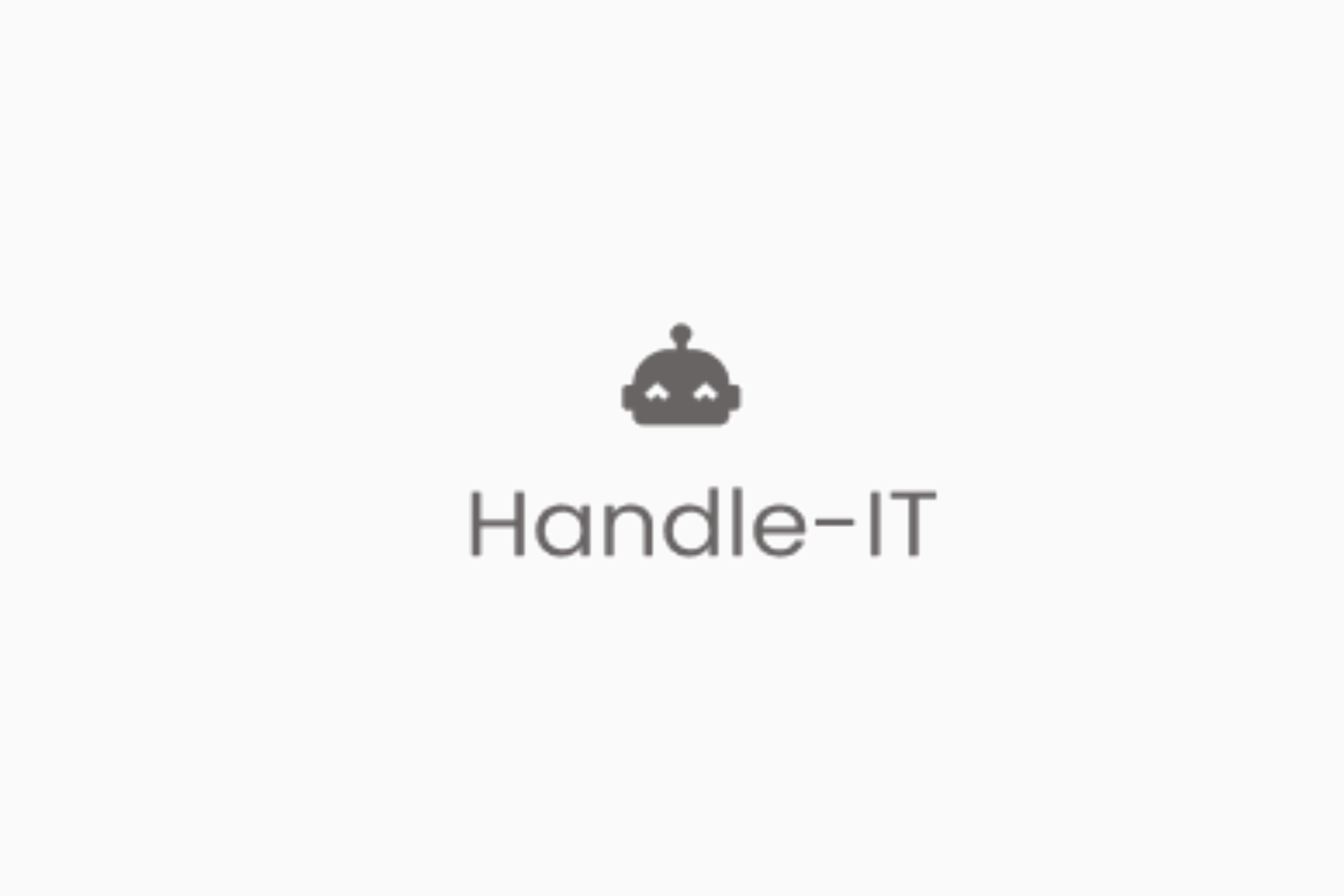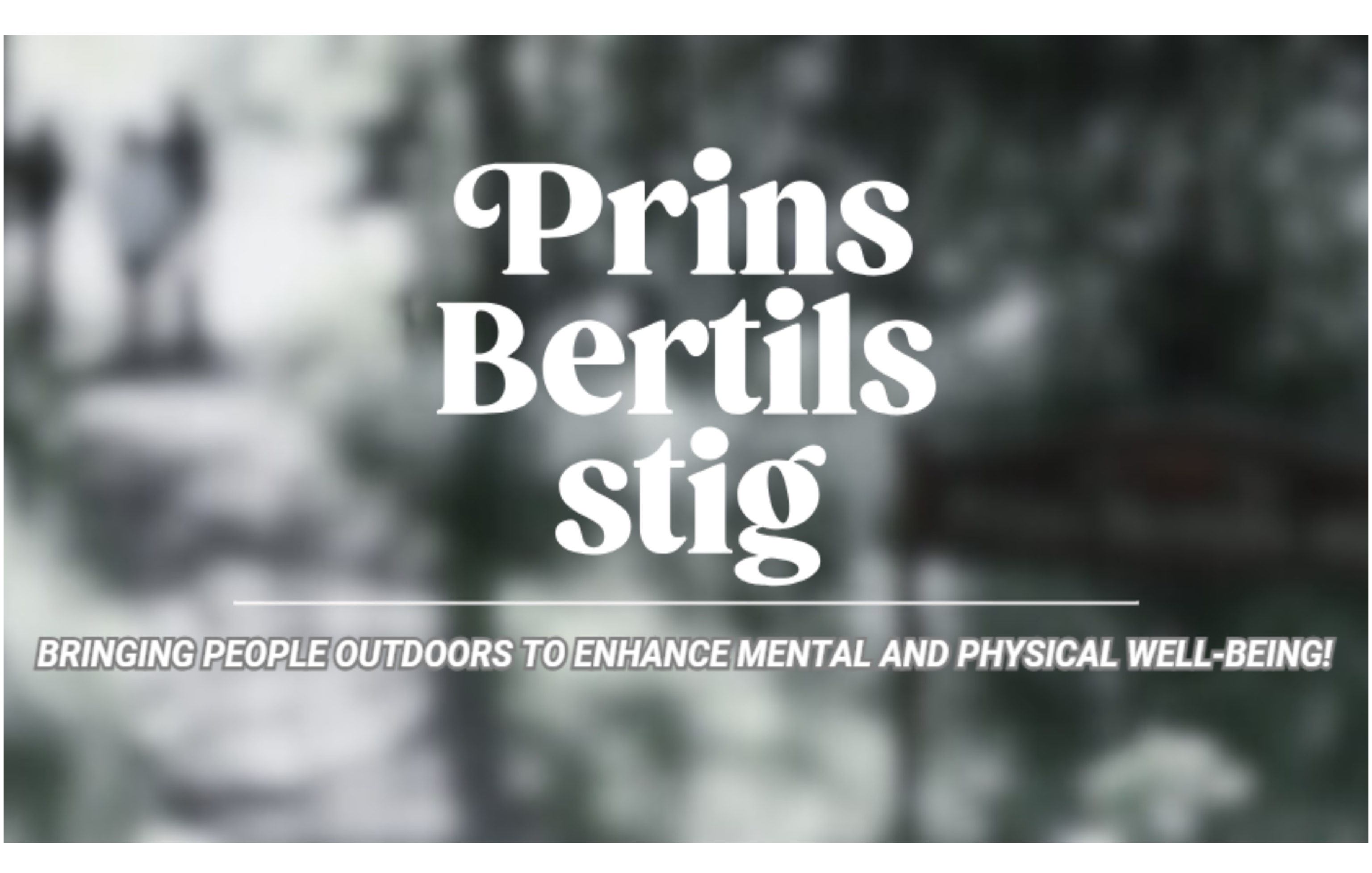Project Eden
Imagine.. A group of children, sitting in silence, glued to their screens, barely moving, lost in the digital world - in a trance.
It's a scene that's becoming all too common, not just in Sweden, but around the globe..
But what if I told you that this behaviour is not just affecting their physical health but also their academic performance?
It's time to step up and make physical activity a top priority. This is where initiatives like Project Eden, designed by us, come in.
We aim to integrate nature-based activities into the educational experience, creating opportunities for outdoor play and physical exercise.
Here is a video that showcases how we conceptualised our project
During my Project Management course, our team of five collaborated on a project with the goal of organising a pilot event within two months.
For this project, we focused on reconnecting children with nature through outdoor activities. Our goal was to create an engaging, sustainable, and cost-effective event that would promote physical, mental, and social well-being. We called it Project Eden, a pilot project designed to test this concept and set a precedent for future initiatives.
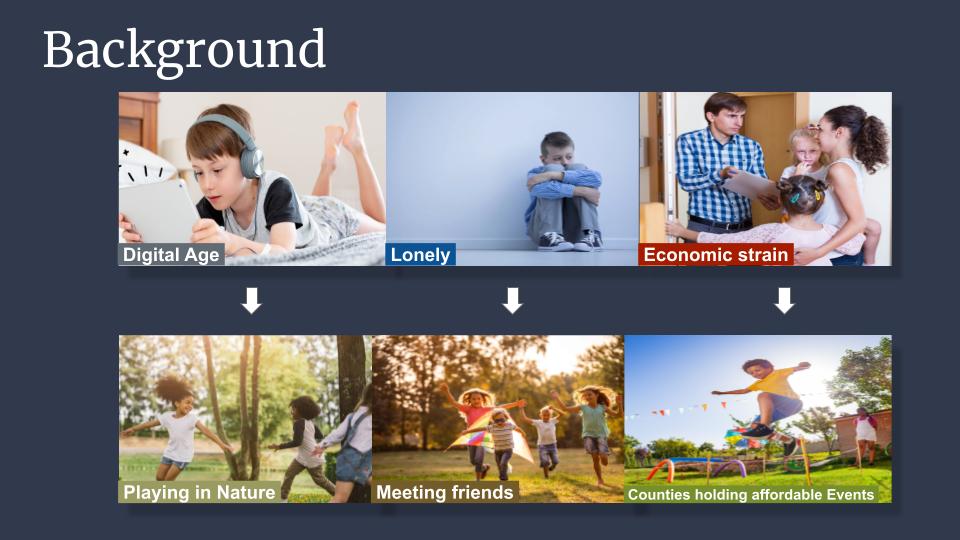
We started by identifying a key issue: Children today spend a significant amount of time indoors, often isolated with digital devices.
We wanted to contrast this with a more traditional way of play—one that encourages movement, creativity, and social interaction in outdoor settings.
Our vision was to shift kids from screen time to green time, creating an environment where they could explore, connect, and play freely in nature.
Our project stemmed from three major challenges:
1️⃣The rise of the digital age
2️⃣Increasing disconnect and loneliness amongst children
3️⃣Economic strain on families
We wanted to design an event that addressed these issues by providing free and accessible outdoor activities that encourage social bonding and active play. This led us to develop an event structure that was both affordable and impactful.
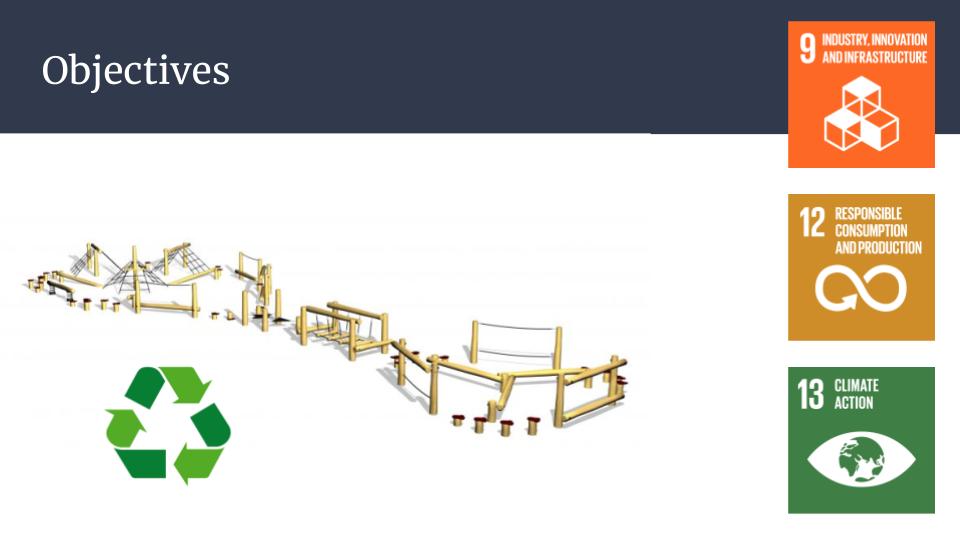
The main objective of Project Eden was to improve children's well-being in a sustainable way. We focused on three core areas:
1️⃣ Mental Well-being – Encouraging movement through obstacle courses and team-based games, providing a space for children to disconnect from digital screens and experience nature.
2️⃣ Social Development – Fostering interactions through group activities and teamwork.
3️⃣ Sustainability – To align with sustainability goals, we designed all activities using recycled and repurposed materials, ensuring long-term use for future events.
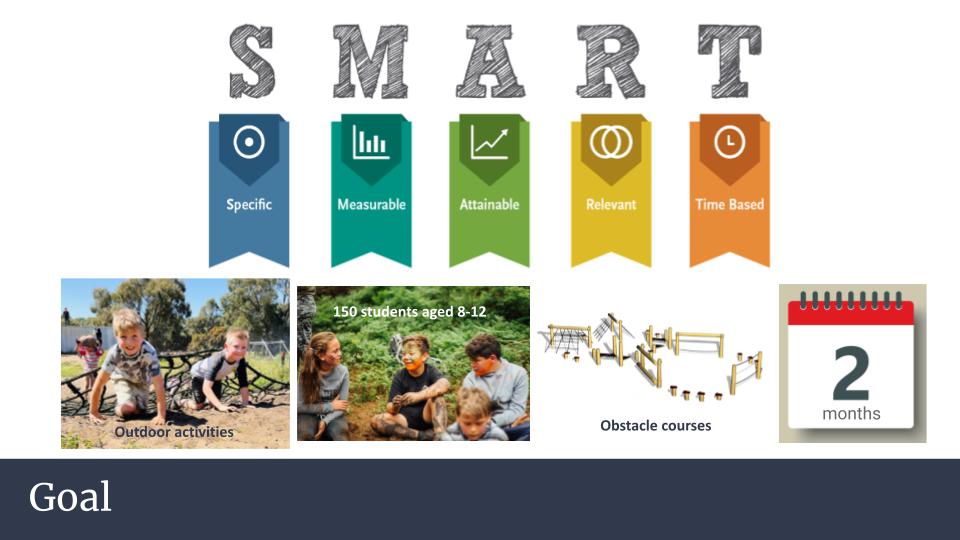
In Project Management, setting SMART goals—Specific, Measurable, Attainable, Relevant, and Time-Based—is essential for maintaining clarity, efficiency, and accountability. For Project Eden, we applied this framework to ensure that our objectives were not only well-defined but also achievable within our two-month timeline.
Specific targets set to guide our planning:
📍 Scope: A two-day outdoor event for 150 children aged 8–12.
📍 Measurable Impact: Tracking engagement, participation, and feedback.
📍 Attainable: Designed within a two-month timeframe to test feasibility.
📍 Relevant: Focused on reducing screen time and promoting outdoor activities.
📍 Time-Based: Executed within the planned deadline.
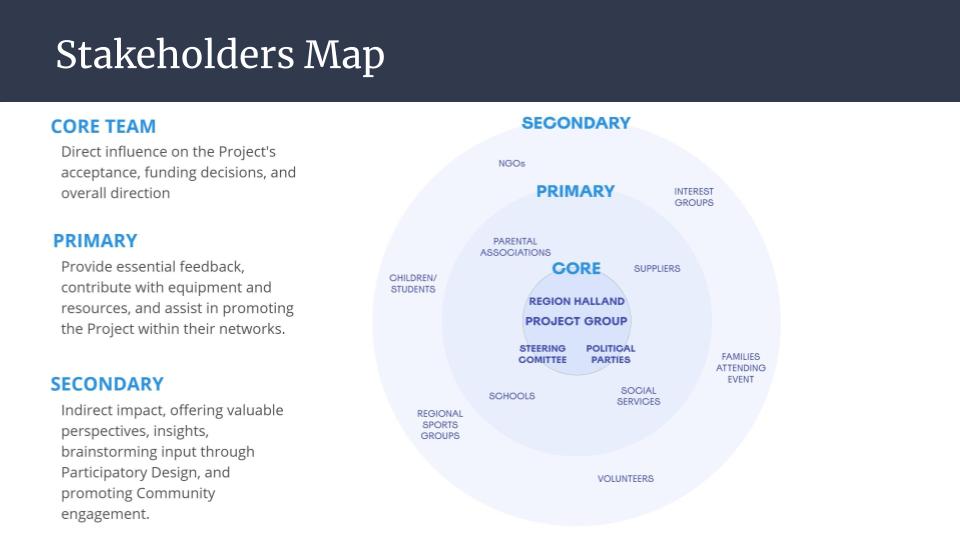
Collaboration was key in making this project successful. The different stakeholder groups:
Core Team: Directly involved in funding, planning, and execution.
Primary Stakeholders: Schools, parental associations, and suppliers, who provided resources and support.
Secondary Stakeholders: NGOs and community groups, who contributed insights and promoted participation.
Understanding these roles helps to streamline communication and resource allocation.
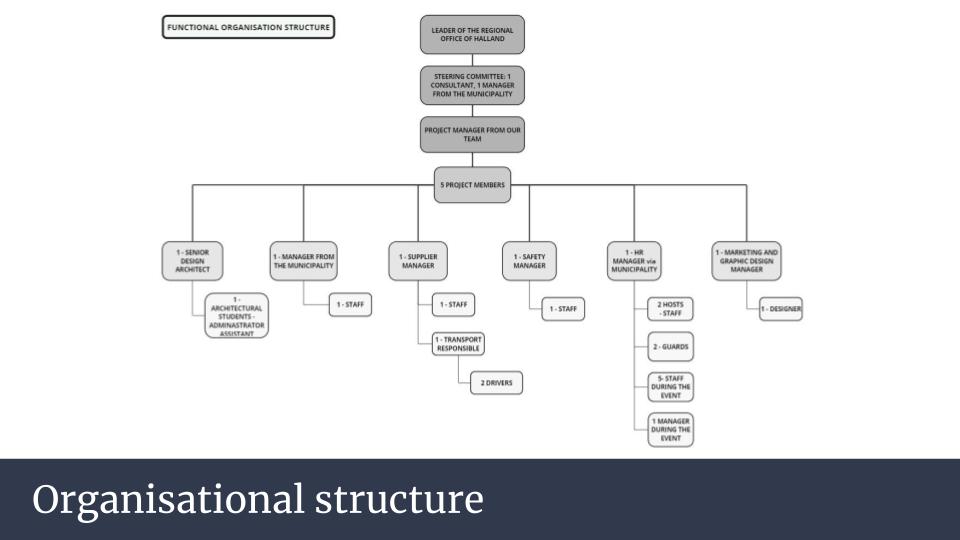
To ensure efficient planning and execution, we structured the project into two main groups:
1️⃣ Strategic Management (Steering Committee & Regional Manager) – Responsible for decision-making, funding, and approvals.
2️⃣ Operational Teams – Six specialised departments that managed specific aspects:
Senior Design Architect – Led the overall layout and structural design.
Supply Manager – Coordinated logistics and material procurement.
Municipality Manager – Handled permits and local approvals.
Safety Manager – Ensured risk assessments and emergency preparedness.
HR Manager – Managed staff and volunteer coordination.
Marketing & Graphic Design – Promoted the event and handled branding.
By dividing responsibilities this way, we created a clear workflow, ensuring that every aspect of the project was covered.
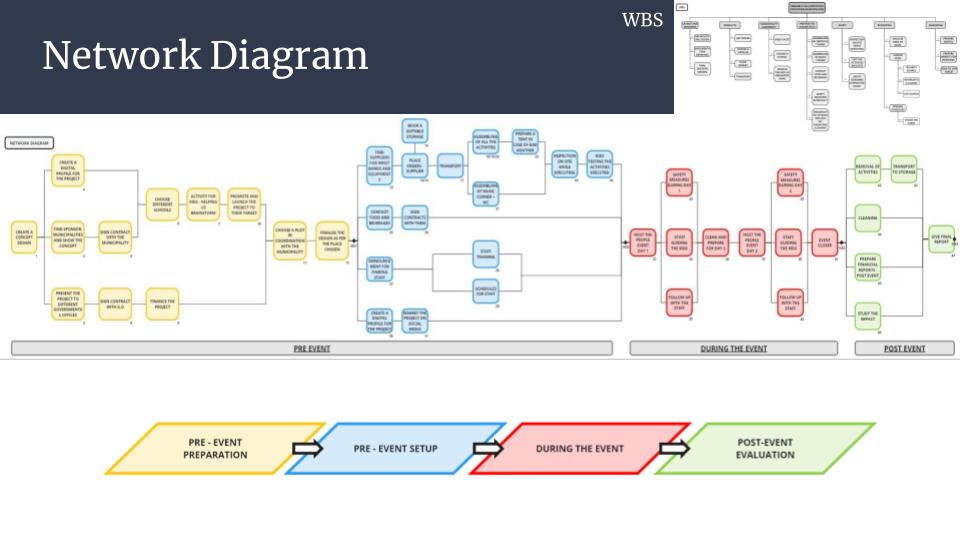
Planning an event of this scale required a detailed workflow to track dependencies and ensure smooth execution.
The Network Diagram provided an overview of:
📍 Pre-Event Planning – Identifying locations, securing funding, and setting up the design framework.
📍 During the Event – Managing logistics, staffing, and safety protocols.
📍 Post-Event Evaluation – Collecting feedback, analysing impact, and planning for future iterations.
This structured approach helped us manage complex tasks efficiently, ensuring that nothing was overlooked.
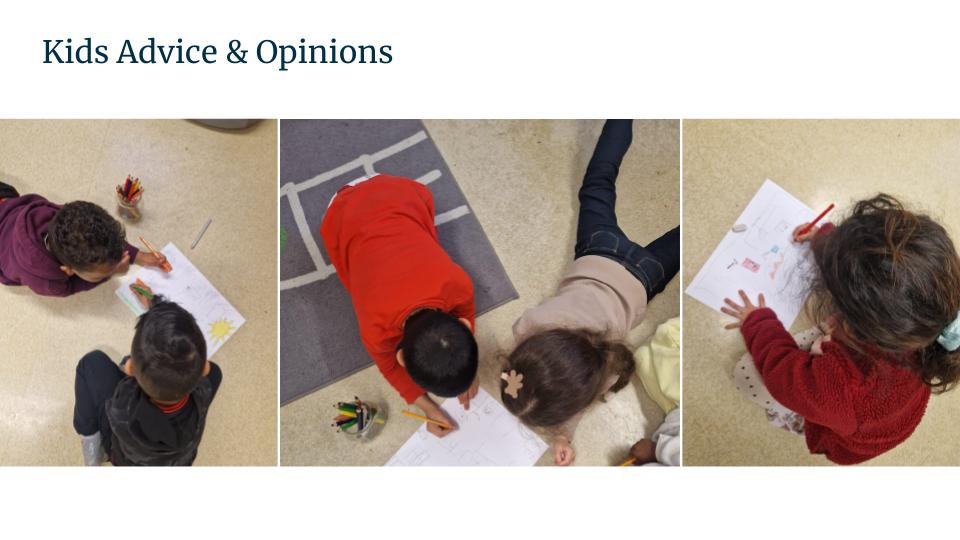
A unique aspect of this project was using Participatory Design - involving children in the design process. We wanted to ensure that the activities reflected what they actually wanted.
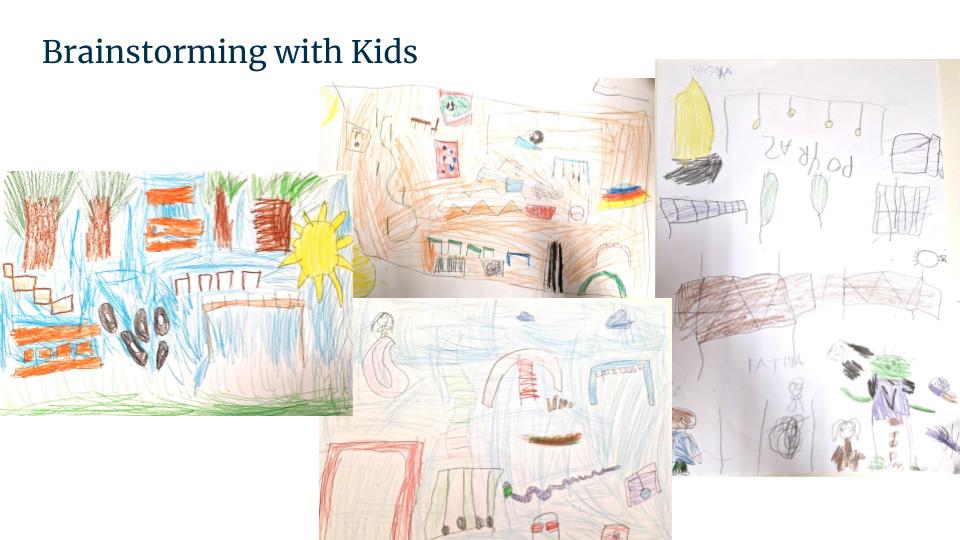
So, we organised a brainstorming session where kids drew their ideal playgrounds and shared their ideas. These insights directly influenced the final design.
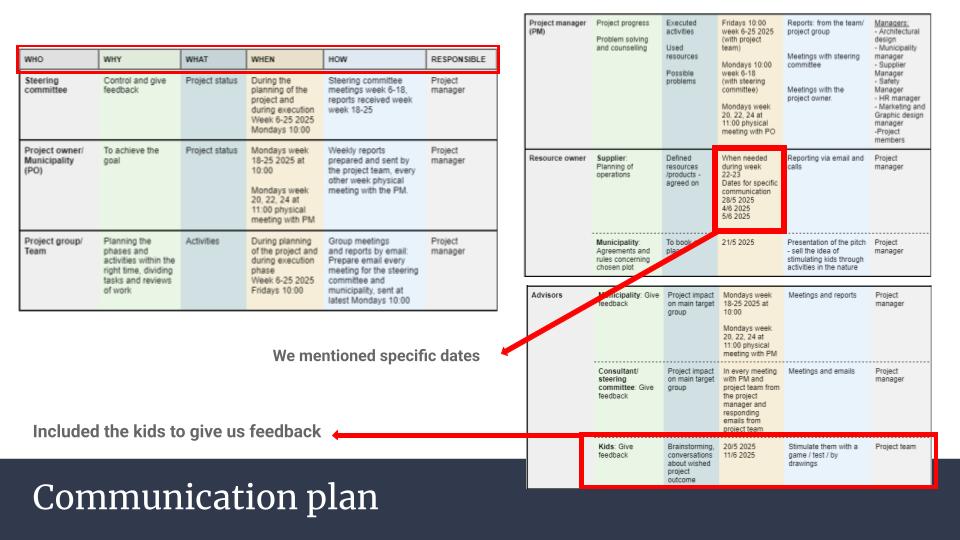
Effective communication was essential to keep everyone aligned. We structured our communication plan to differentiate between:
Formal Reports – Shared via email for stakeholders who needed regular updates.
Real-Time Meetings – Held with the steering committee for decision-making.
Interactive Feedback – A special method designed for children, where they could express their ideas through games and visual storytelling.
This approach ensured clarity and collaboration throughout the project.
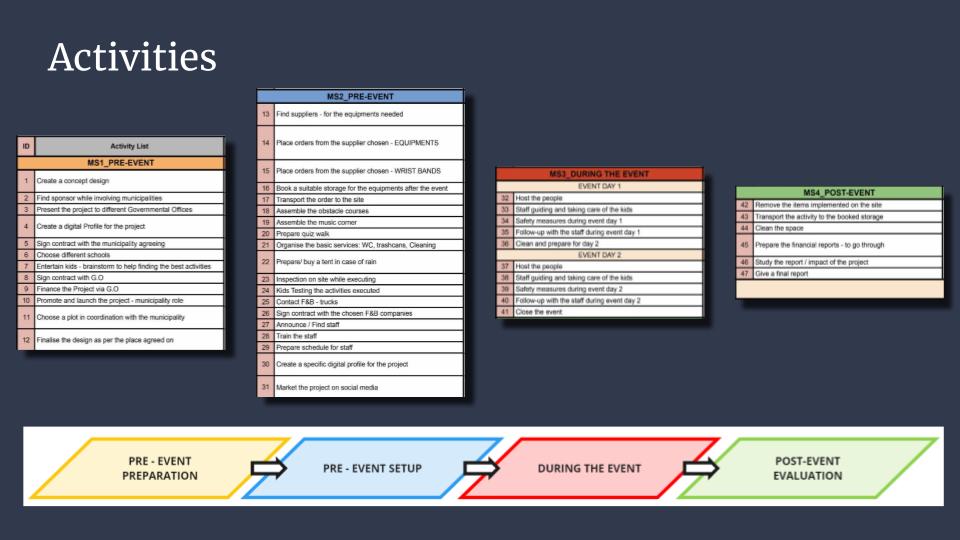
The event was divided into three main phases:
1️⃣ Pre-Event Preparation – Finalising designs, securing locations, and gathering materials.
2️⃣ During the Event – Hosting the children, managing logistics, and ensuring safety.
3️⃣ Post-Event Evaluation – Assessing feedback, reviewing impact, and planning for future implementations.
Each phase was carefully scheduled to ensure smooth execution.
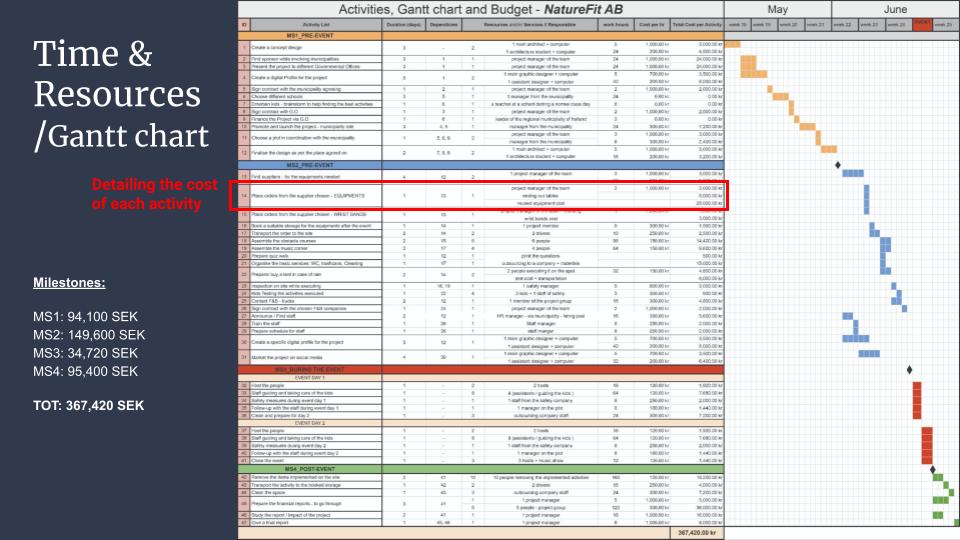
To manage the project efficiently, we created a detailed Gantt chart outlining:
✅ The number of people required for each task.
✅ The estimated duration of activities.
✅ The budget allocation for each milestone.
For example, one of the key activities required a project manager for an hour, costing 1,000 SEK, while other tasks had different resource needs. Having this structure helped us stay on track and within budget.

Outdoor events come with uncertainties, so we identified key risks and planned responses:
🌧 Unfavourable weather – We pre-purchased tents to keep activities running.
📍 Difficulties in finding a suitable plot – A pre-approved list of locations helped streamline the process.
🧑💻 Loss of a project team member – We used a lean approach, ensuring all team members were cross-trained.
🚚 Logistical challenges – We scheduled an extra day for material delivery to prevent delays.
These risk-mitigation strategies were also integrated into our budget and timeline.
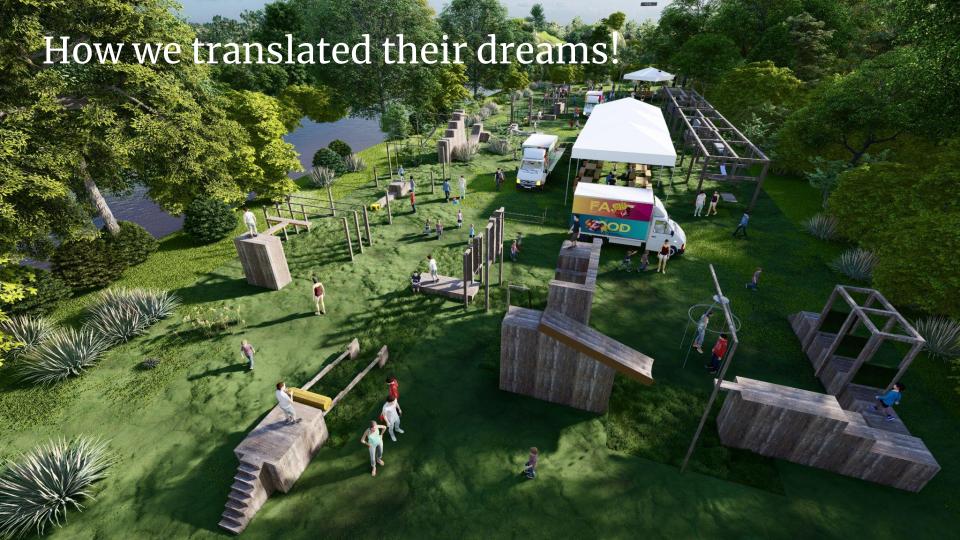
After months of planning, this was the final translation of our ideas into reality. The activities were to be built using recycled wood and repurposed materials, following our sustainability goals while ensuring durability for future events.
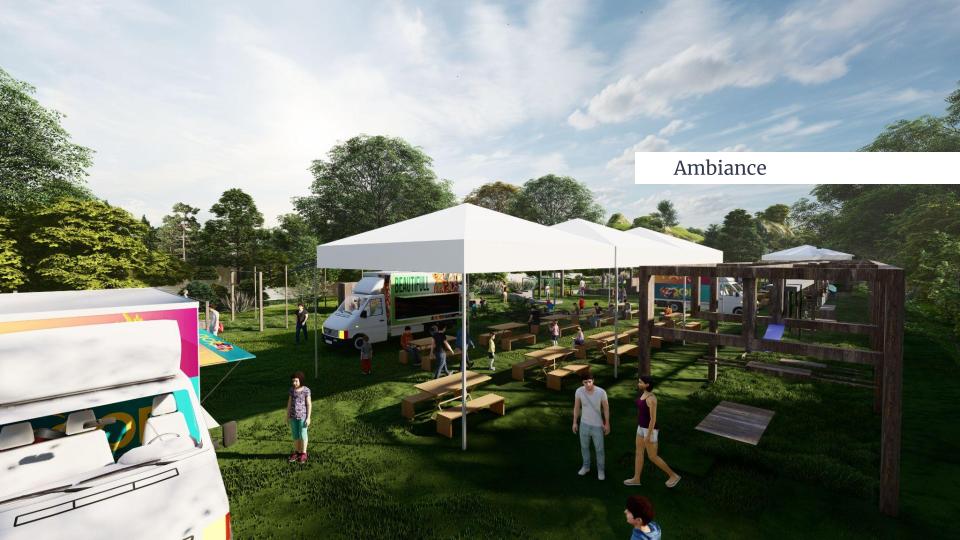
The event comes to life as children engaged with the obstacle courses, team games, and interactive challenges.
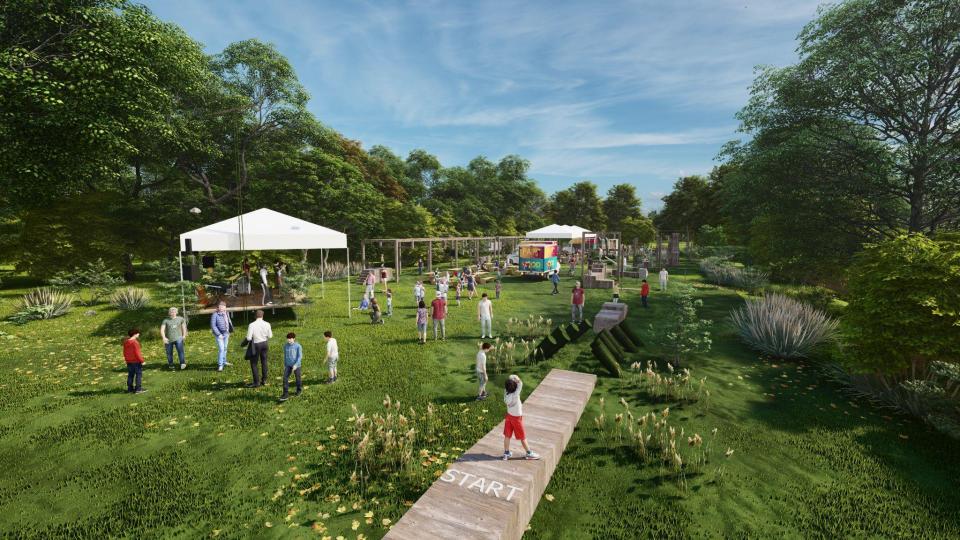
One of the key elements of Project Eden was its commitment to sustainability:
🌱 Circular Economy – Using recycled materials like repurposed wood and old car tires.
📍 Reducing Digital Dependency – Encouraging outdoor play instead of screen time.
♻ Long-Term Use – The structures and games we built were designed to last for multiple future events.
By following this model, we contributed to the EU’s Sustainability Goals (Agenda 2030) and set an example for cost-effective, eco-friendly community initiatives.
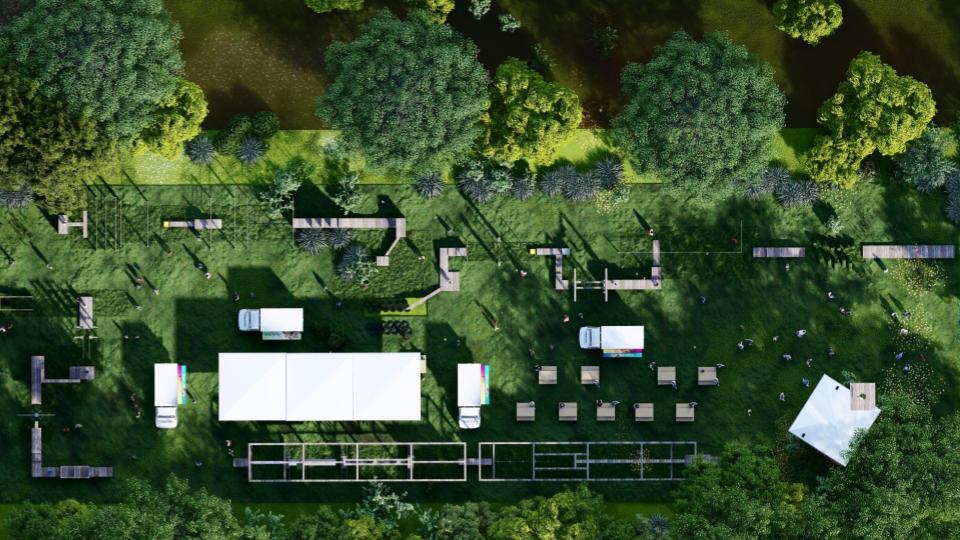
Looking back, Project Eden successfully demonstrated how low-cost, sustainable interventions can positively impact children’s well-being. Our pilot event was set to reach 150 children and ultimatley provides a scalable framework for future projects in other cities. Beyond just an event, Project Eden set a precedent—proving that reconnecting with nature is not only possible but also essential in today’s digital world.
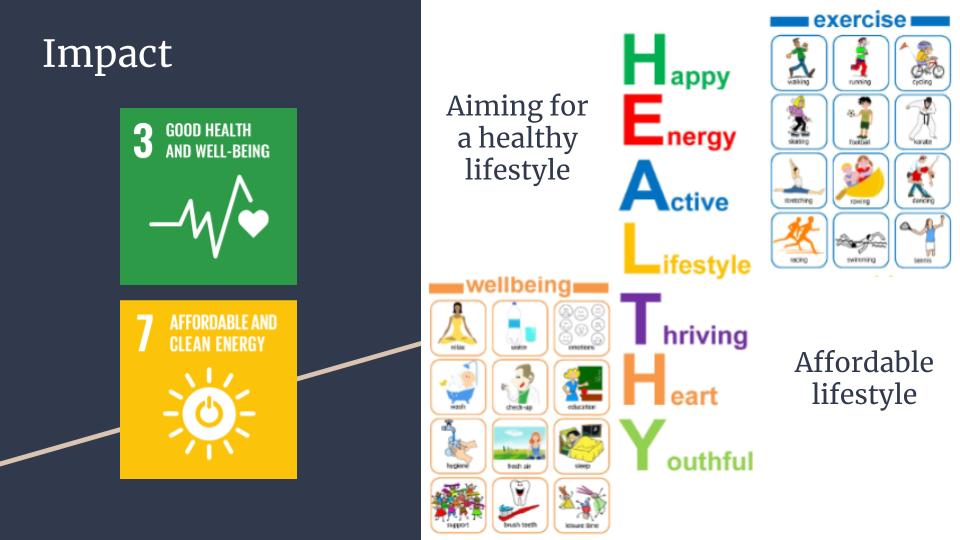
At the end of the project, we assessed the impact in three key areas:
✅ Health & Well-being – The event encouraged children to be active, interact socially, and reduce screen time.
✅ Sustainability & Affordability – By using recycled materials, we minimised costs while promoting eco-friendly initiatives.
✅ Community Engagement – Schools, parents, and local businesses participated, strengthening community bonds and opening discussions about the importance of outdoor play.
The project also aligned with UN's Sustainable Development Goals (SDG 3: Good Health & Well-being, and SDG 12: Responsible Consumption & Production).
The overwhelmingly positive feedback we received confirmed that this model could be implemented and replicated in other regions.
A huge THANK-YOU to Roland, Lena, Simon, and Hampus for the amazing collaboration! 🙏 Team! 🫶
Next Project loading soon!



